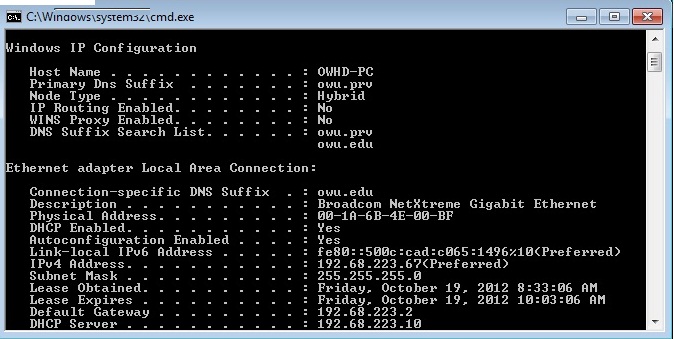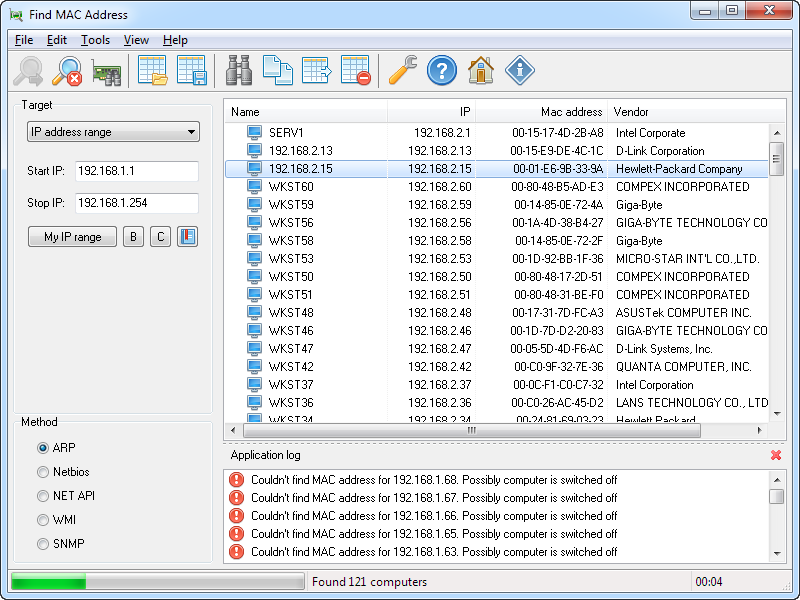
#WIFI MAC ADDRESS LOOKUP MAC#
Understanding how ARP works can help you find IPs and MAC addresses quickly. Their frames encapsulate packets that contain IP address information.Ī device must know the destination MAC address to communicate locally through media types like Ethernet or Wifi, in layer 2 of the OSI model. As you might already know, devices in the data link layer depend on MAC addresses for their communication. It operates with frames on the data link layer.
#WIFI MAC ADDRESS LOOKUP HOW TO#
Related post: How to Scan network for IP Addresses Understanding ARPĪRP (Address Resolution Protocol) is the protocol in charge of finding MAC addresses with IPs in local network segments. In this article, we’ll show you how to find all ip addresses on a network along with device vendors using MAC addresses with different methods for free. But RARP is an obsolete protocol with many disadvantages, so it was quickly replaced by other protocols like BOOTP and DHCP, which deal directly with IP addresses. Or your computer is unable to display its IP due to various reasons, and you are getting a “No Valid IP Address” error.įinding the IP from a known MAC address should be the task of a ReverseARP application, the counterpart of ARP. You might be in a situation where you don’t have the IP address of a device in a local network, but all you have is records of the MAC or hardware address. The Ethernet MAC address is listed right below the tabs.How would you communicate with a device when you don’t have the IP? Your MacBook's Wi-Fi MAC address is listed at the bottom of the window as the "Wi-Fi Address."Ĭlick the "Hardware" tab in the Ethernet window. Then click on Advanced in the lower right corner.Ĭlick the "Wi-Fi" tab in the Wi-Fi window. In the left column, select Ethernet (for wired connection) or Wi-Fi (for wireless connection).

Or click Status > Change adapter options.Ĭlick the Apple icon, from the Apple drop-down list, select System Preferences. Go to Network settings.Ĭlick Ethernet > Change adapter options. The physical address is the MAC address of your computer will display.Ĭlick the network icon (may look like a computer or Wi-Fi signal) in the task tray. Highlight and right click on Ethernet, go to Status -> Details.
#WIFI MAC ADDRESS LOOKUP WINDOWS#
Press Windows key+X at the same time and select Control Panel. The physical address is the MAC address of your computer will display.

Highlight and right click on Ethernet(If your computer is connected to a wireless network please click Wi-Fi icon), go to Status -> Details. Here we will illustrate different ways to find control panel on Windows 8.ġ) Press “ Windows key +F”, a search box will come out, please input control panel and press enter Ģ)Press “ Windows key + R”, then there will be a “ run” box, input control panel and press enter ģ) Press “ Windows key +X”, and click on “ control panel” Ĥ) You can also input “ control panel” in the search bar on the right-hand side of the screen.Ĭlick on Network and Internet -> Network and Sharing Center, click on Change adapter settings on the left side. Highlight and right click the Local Area Connection icon( If your computer is connected to a wireless network please click Wireless network connection icon) click on Status and go to Details. In the task list, please click Change adapter settings. Highlight and right-click the Local Area Connection icon click on Status and go to Details. In the task list, please click Manage network connections( If your computer is connected to a wireless network please click Wireless network connection icon). The physical address is the MAC address of your computer will display.Ĭlick Start -> Control Panel -> Network and Internet -> Network and Sharing Center. Highlight and right-click the Local Area Connection icon(If your computer is connected to a wireless network, please click Wireless network connection icon) click on Status and go to Support and Detail.

Through Control Panel:Ĭlick Start->Control Panel->select and click Network and internet connections (If you cannot find it, please go next) ->select and double click Network Connections. Choose the operating system of your computer.


 0 kommentar(er)
0 kommentar(er)
